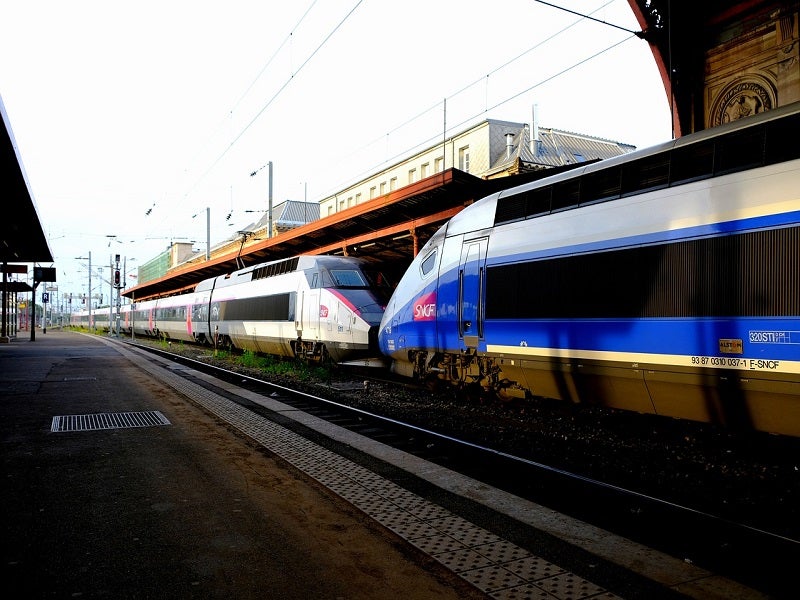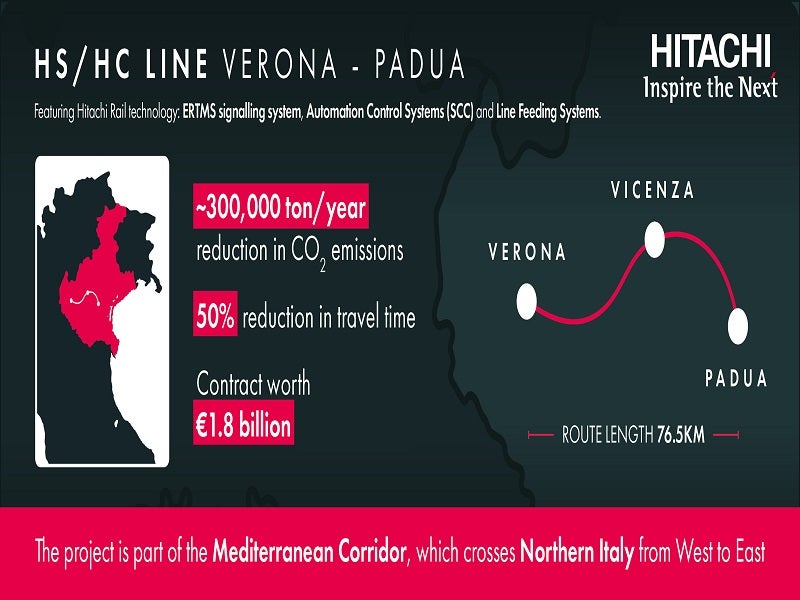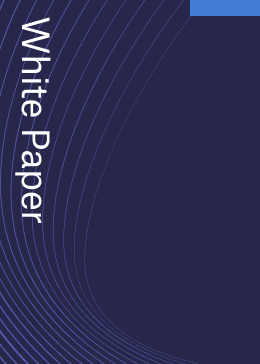The new Verona-Padua high-speed, double-track rail line project is being carried out by Rete Ferroviaria Italiana (RFI), the Italian railway infrastructure manager. RFI is the infrastructure arm of Ferrovie dello Stato Italiane (FS Group), Italy’s state-owned railway holding company.
The construction works are being undertaken by the IRICAV DUE consortium, which comprises the general contractor Webuild Group and Hitachi Rail STS. The two companies hold 82.95% and 17.05% interests respectively in the project.
The project aims to quadruple the railway line between Verona and Padua, while also relocating the old line where the two tracks come close to each other. It is part of the Turin-Milan-Venice railway line, a component of the Mediterranean corridor of the trans-European transport network (TEN-T core network) that will link Spain and Ukraine.
The estimated investment in the project is €5bn ($5.47bn). The construction is expected to be completed by December 2026.
Location
The Verona-Padua high-speed rail line is located in Italy and crosses the provinces of Verona, Vicenza and Padua.
Project details
The rail line covers a distance of 76.5km, of which 36km will run adjacent to the old line.
The new line will pass through Verona Porta Vescovo, San Bonifacio, Lonigo, Montebello Vicentino, Vicenza, Lerino, Grisignano di Zocco, Mestrino, Rubano, and Padua stations.
The project is being carried out in three functional lots. The first lot (L1) covers the section from Verona to Bivio di Vicenza, spanning 44.2km and crossing 13 municipalities. A 35.65km length of this section will run on open ground, 6.22km on viaducts and 2.36km through artificial tunnels.
The second lot (L2) covers 6.2km, from the town of Altavilla Vicentina to the Vicenza Station junction. The section will pass through the municipalities of Altavilla Vicentina, Creazzo, Sovizzo, Torri di Quartesolo and Vicenza. The development works on the section will also involve the renewal of the existing line spanning 4.8km in length.
The L2 will be equipped with Hitachi’s European Rail Transport Management System (ERTMS) digital signalling, the most advanced system for the digital control of railways. The system uses radio signals between the train and the track to monitor speed. The system can automatically activate the train’s emergency brakes due to hazards or if the train exceeds the track’s speed limit.
The third lot (L3) will cover over 26.1km of rail line from Vicenza to Padua and is currently in its final design phase.
Construction details
Construction works on the L1 from Verona to Bivio Vicenza commenced in 2020. Activities related to the bridge over the Guà River at Montebello Vicentino (Vicenza) were completed in October 2023.
Preliminary executive design work for the L2 commenced in July 2023.
Contractors involved
Hitachi Rail was awarded a €1.8bn ($2bn) contract in August 2023 for the second lot of the project, which involves designing and delivering the track and the ERTMS.
Webuild Group signed a €1.596m contract to carry out the construction of the second section of L1 in May 2021. The company and its consortium members were further awarded the contract for the executive design and construction works for the L2 section of the rail line in July 2023.
Engineering company, Salcef was awarded the contract to carry out trackwork and civil works of the project in January 2022.
Benefits
Works on the Verona-Padua high-speed rail line project are expected to generate 4,000 direct and indirect jobs.
The new high-speed railway line will promote a sustainable transport system, which will help in reducing road traffic issues while reducing its environmental impact. The project is expected to reduce up to 300,000t of CO2 emissions per year.
It will boost regional and freight transport services along the Milan-Venice railway route, providing increased capacity with regular and shorter transit times.





